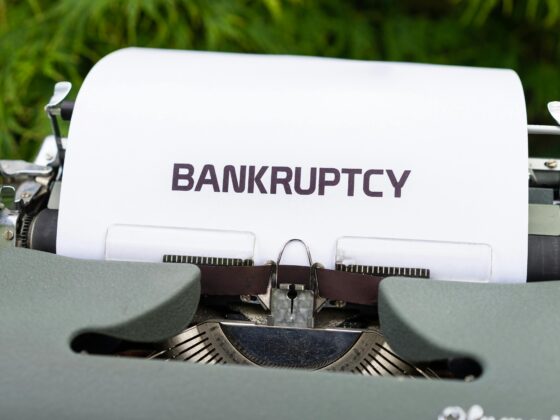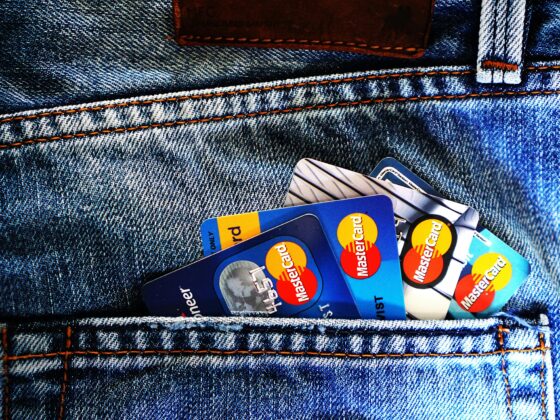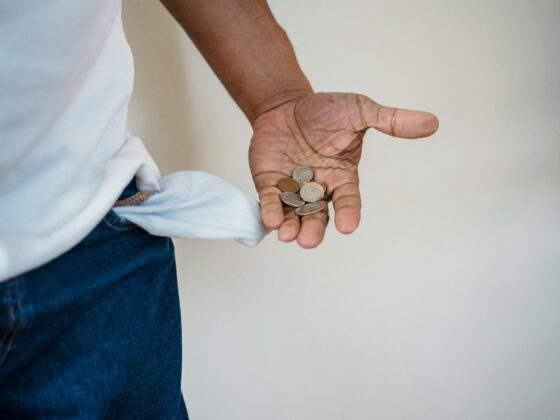Debt can feel overwhelming, isolating, and impossible to escape. But here’s the truth: you can take control of your financial situation starting today. Whether you’re behind on credit cards, juggling multiple loans, or just realising your spending has gone too far, this guide will walk you through exactly what to do when you’re in debt — and how to stay debt-free for life.
This article is your roadmap out of debt. Think of it as a starting point, with links to more detailed guides where you can dig deeper into each step.
Why People End Up in Debt (And Why You’re Not Alone)
Before we dive into solutions, it helps to understand why debt happens:
- Unexpected expenses (medical bills, car repairs, emergencies).
- Job loss or reduced income.
- Overspending or lack of budgeting.
- High-interest credit cards that spiral out of control.
📌 According to the Federal Reserve, the average American carries over $7,000 in credit card debt. You are not alone — and you are not powerless.
Read more: Why People Fall into Financial Trouble—and How to Avoid It
Step 1: Stop the Bleeding
The first thing to do when you’re in debt is to stop adding more debt.
- Put away credit cards.
- Pause unnecessary spending.
- Switch to cash or debit for everyday expenses.
👉 Action Step: Track your spending for the next 7 days. Awareness is the first weapon against debt.
Read more: How to Stop Living on Credit Cards and Break the Cycle
Step 2: Face the Numbers (Create a Debt Inventory)
It’s tempting to avoid opening bills, but ignoring debt makes it worse. Write down:
- Each debt (credit card, loan, medical bill, etc.)
- Balance owed
- Interest rate
- Minimum monthly payment
👉 Action Step: Create a simple spreadsheet or use a free debt payoff calculator. This gives you a clear picture of where you stand.
[Download: Free Debt Tracker Spreadsheet]
Step 3: Choose a Debt Payoff Strategy
There are two proven debt repayment methods:
The Debt Snowball Method
- Pay minimums on all debts.
- Throw all extra money at your smallest debt first.
- Once it’s gone, roll that payment into the next debt.
✅ Best for: Motivation and quick wins.
[Learn More: The Debt Snowball Method Explained]
The Debt Avalanche Method
- Pay minimums on all debts.
- Throw extra money at the highest interest debt first.
✅ Best for: Saving money on interest.
[Learn More: The Debt Avalanche Method Explained]
Snowball vs. Avalanche: Which Works Better?
The right choice depends on your personality. If you need motivation → Snowball. If you want to save the most money → Avalanche.
👉 Pro Tip: Use whichever method keeps you consistent. Momentum matters more than math.
[Read More: Debt Snowball vs. Avalanche: Which Should You Choose?]Step 4: Build a Bare-Bones Budget
A good budget is your debt-payoff engine.
- List monthly income.
- Subtract essential expenses (rent, utilities, groceries).
- Allocate everything else to debt.
Popular methods:
- Zero-based budgeting (every dollar has a job).
- 50/30/20 rule (needs/wants/savings-debt split).
- Envelope method (cash system for controlling spending).
📌 Tools to try: YNAB, Mint, EveryDollar.
👉 Affiliate opportunity: [Best Budgeting Apps to Pay Off Debt]
Step 5: Negotiate and Consolidate (Optional)
If your debts feel unmanageable, you have options:
- Call creditors → Ask for lower rates, waive late fees, or set up hardship plans.
- Debt consolidation loan → Combine debts into one lower-interest payment.
- Balance transfer card → Move high-interest debt to 0% APR (if you qualify).
- Credit counseling agencies → Nonprofits can help set up repayment plans.
⚠️ Warning: Avoid shady “debt relief” companies that promise instant fixes. Stick with reputable, accredited organizations.
[Read More: Best Debt Consolidation Loans of 2025]
[Read More: Credit Counseling vs. Debt Settlement — What’s the Difference?]
Step 6: Build a Starter Emergency Fund
It may sound backwards, but saving $500–$1,000 before aggressively attacking debt prevents you from sliding back into credit cards when emergencies happen.
This small safety net helps you break the cycle.
Read More: Build an Emergency Fund; How to Get Out of Debt and Save Money
Step 7: Stay Out of Debt for Good
Escaping debt is only half the journey. To stay free:
- Build a 3–6 month emergency fund.
- Continue budgeting monthly.
- Automate savings.
- Only use credit cards if you pay them in full.
- Focus on long-term goals (investing, retirement, home ownership).
Read More: How to Avoid Debt After You’ve Paid It Off: The Complete Guide to Financial Freedom
Practical Tips to Accelerate Your Debt Payoff
- Take on a side hustle (freelancing, gig apps, tutoring, digital services).
- Sell unused items (online marketplaces, garage sales).
- Cut recurring expenses (subscriptions, eating out, luxury purchases).
- Use windfalls (tax refunds, bonuses) for lump-sum payments.
[Read More: Best Side Hustles to Pay Off Debt Fast]
Frequently Asked Questions
1. Should I pay off debt or save first?
→ Save a small emergency fund (£500–£1,000), then aggressively pay down debt.
2. Will debt ruin my credit forever?
→ No. As you pay down balances and make on-time payments, your score will improve.
3. Should I consider bankruptcy?
→ Bankruptcy is a last resort, but for some it’s the right choice. Speak with a licensed attorney before deciding.
Read More: Is Bankruptcy A Good Idea? What to Expect
Tools & Resources to Help You Escape Debt
- ✅ [Free Debt Payoff Calculator]
- ✅ [Best Budgeting Apps for Debt Freedom]
- ✅ [Best Debt Consolidation Loans 2025]
- ✅ [Printable Debt Snowball Tracker]
- ✅ [Credit Counselling Services You Can Trust]
Final Word: You Can Escape Debt
If you’re in debt and wondering “what now?”, the answer is: start small, stay consistent, and keep moving forward. Every extra payment, every avoided purchase, every step toward a budget brings you closer to debt freedom.
💡 Remember: Debt is temporary. Your financial freedom can be permanent.









